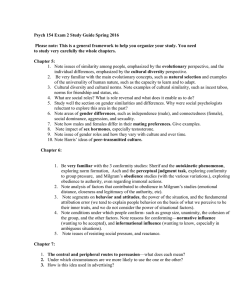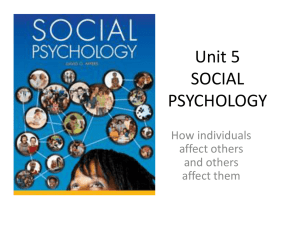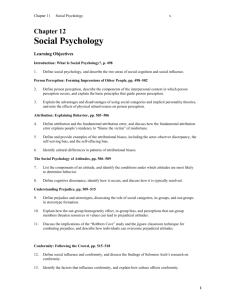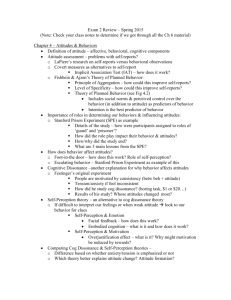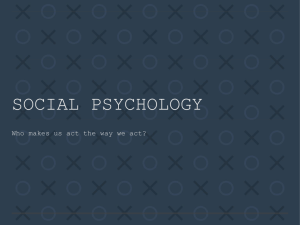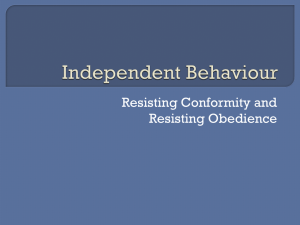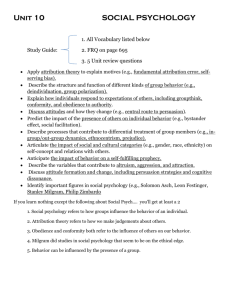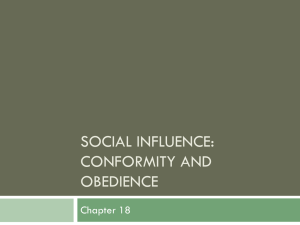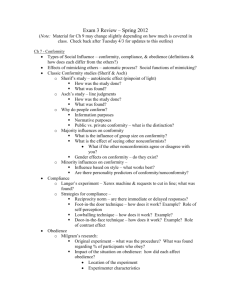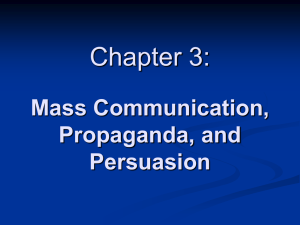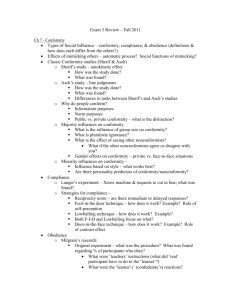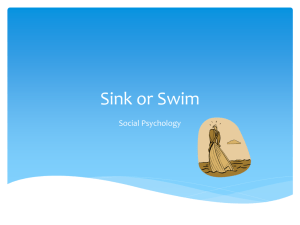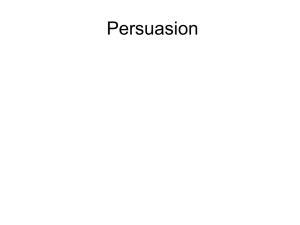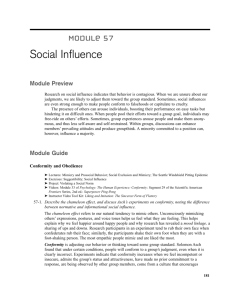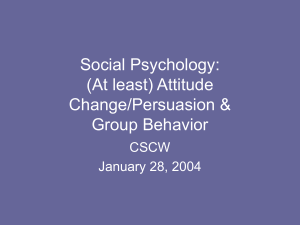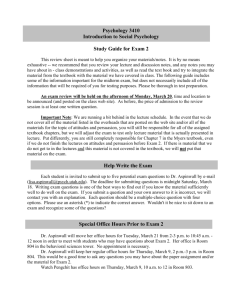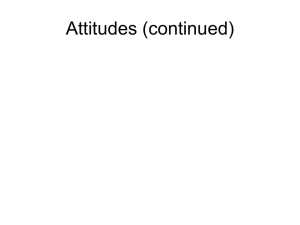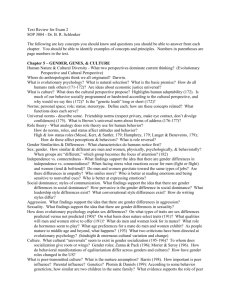Exam 2 Review: Persuasion & Conformity
advertisement
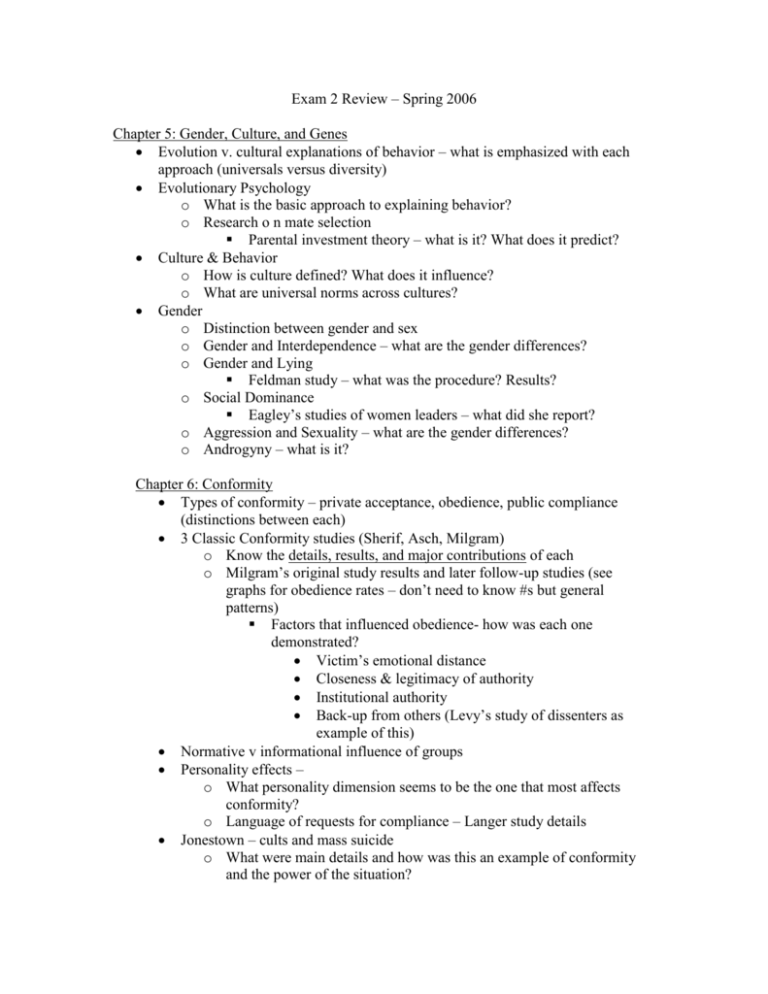
Exam 2 Review – Spring 2006 Chapter 5: Gender, Culture, and Genes Evolution v. cultural explanations of behavior – what is emphasized with each approach (universals versus diversity) Evolutionary Psychology o What is the basic approach to explaining behavior? o Research o n mate selection Parental investment theory – what is it? What does it predict? Culture & Behavior o How is culture defined? What does it influence? o What are universal norms across cultures? Gender o Distinction between gender and sex o Gender and Interdependence – what are the gender differences? o Gender and Lying Feldman study – what was the procedure? Results? o Social Dominance Eagley’s studies of women leaders – what did she report? o Aggression and Sexuality – what are the gender differences? o Androgyny – what is it? Chapter 6: Conformity Types of conformity – private acceptance, obedience, public compliance (distinctions between each) 3 Classic Conformity studies (Sherif, Asch, Milgram) o Know the details, results, and major contributions of each o Milgram’s original study results and later follow-up studies (see graphs for obedience rates – don’t need to know #s but general patterns) Factors that influenced obedience- how was each one demonstrated? Victim’s emotional distance Closeness & legitimacy of authority Institutional authority Back-up from others (Levy’s study of dissenters as example of this) Normative v informational influence of groups Personality effects – o What personality dimension seems to be the one that most affects conformity? o Language of requests for compliance – Langer study details Jonestown – cults and mass suicide o What were main details and how was this an example of conformity and the power of the situation? Chapter 7: Persuasion ELM Model: Central v Peripheral routes of Persuasion o Definitions and examples of each o When does each work best and when is it most likely to be used? o Typical ELM study example – Petty et al (1981) – what did they manipulate and what did they find regarding personal relevance and expertise of the source? Influence of Communicator, Message, Audience o Communicator What are the main influences on communicators’ effectiveness? Sleeper effect as an exception – w hat is it? o Message Reason v emotion – when to appeal to each based on audience? Arguing against self-interest – effective or not? Mood induction experiments – what do they show? Effects of inducing fear Primacy vs. recency – which is the more powerful effect? o Audience Attentional biases and resistance Study of students supporting vs opposing legalization of marijuana – results? Previous Commitments Effects of political allegiances? Public commitment? Resisting persuasion / attitude inoculation – how does this work? Media and Persuasion o Third person effect – what is it? o Why is it difficult to do research on the media’s impact on persuasion? o Impact of consumer ads? Political ads? Agenda control? “The Ad and the Ego” video – history of ads, exposure to ads Carli’s study on ‘powerless speech’ – 4 categories and examples of each o When is there a gender difference? What is most effective? Subliminal messages – Greenwald’s study; Murphy’s study o What were main results; how did the 2 studies differ? o Do such messages work? o (note: add any other material covered in class 3/7 not noted here)!
